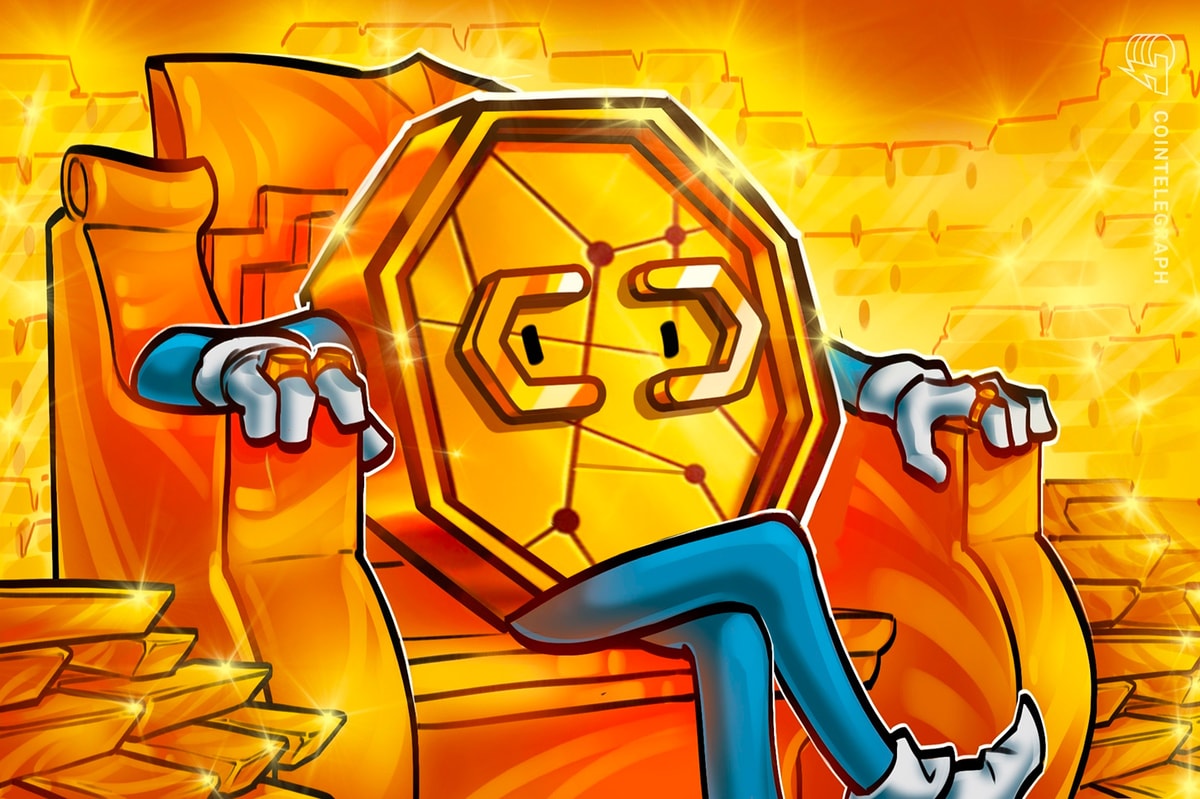Web3 clicker games are the newest phenomenon to appear in the crypto world, but their purported ability to generate fast returns has called their sustainability into question.
Also known as crypto idle games, these simple yet addictive games have witnessed monumental financial growth over the past month alone, attracting tens of millions of users while generating substantial buzz worldwide.
Notcoin, a play-to-earn (P2E) game integrated into the Telegram messaging app, has been at the forefront of this revolution, boasting an impressive 40+ million players. Moreover, since May 26, the game’s native Notcoin (NOT) token has seen a staggering 240% increase in its value, with its market capitalization soaring past $2.75 billion at its peak.

In the first three weeks of May, the game added five million new players, increasing its user base by 14%. This rapid expansion was attributed to the hype surrounding the game’s missions program, which allows players to passively earn NOT tokens.
Notcoin isn’t the only game capturing public attention.
Hamster Kombat is another Telegram-based clicker game that has achieved a number of remarkable milestones within a short period of time. In just 77 days since its launch, the project amassed over 142 million users, outpacing the initial growth rate of popular social media platforms like WhatsApp, Instagram and TikTok. The game’s YouTube channel has also garnered over 21 million subscribers, further highlighting its widespread appeal.
From the outside looking in, these titles seem to be actively tapping into a growing desire for easy-to-access, potentially lucrative crypto opportunities.
Furthermore, by integrating with popular messaging platforms like Telegram, they have lowered the barrier to entry for millions of users who might have otherwise been intimidated by the complexities of the crypto industry.
The allure of digital hamsters and crypto
At their core, games like Catizen, Yescoin, Tapswap, Notcoin and Hamster Kombat (among many others) offer a simple premise: tap your screen to earn digital currency.
The games have struck a chord with users by combining the addictive mechanics of idle games with the allure of cryptocurrency earnings.
According to Inal Kardan, gaming lead at TON Foundation, the accrual of 35 million users in a short period of five months showed him and his team that it was “possible to create unique gaming opportunities using social media messengers” while also onboarding the same users to the crypto sector simultaneously.
Chris Zhu, co-founder and CEO of Sonic — a Solana-based gaming chain — agreed with this sentiment, telling Cointelegraph:
“Clicker games offer a low barrier of entry for retail users with most transactions being offchain, leveraging existing traffic pools like Telegram, where they have been able to attract their initial users with very low costs and minimum friction.”
Yat Siu, co-founder of blockchain gaming venture capital firm Animoca Brands, sees merit in this customer accrual approach, stating, “The Notcoin approach has far better value for end-users and is more aligned with growth incentives versus the adversarial nature of Web2 advertising business models.”
Recent: TXSE ‘upstart’ stock exchange could become a crypto-friendly challenger
On the other side, critics have raised concerns about the long-term viability of these games. For example, Can Picak, co-founder and CEO of Web3 gaming studio Eldarune, told Cointelegraph:
“The mechanics of these clicker games resemble a Ponzi scheme, where early participants benefit the most.”
“Also, the focus on reaching a billion players through projects like Hamster Combat raises questions about their true value proposition and potential for market saturation. It feels more like a mass marketing ploy than genuine crypto adoption. I have sustainability concerns,” he said.
Clicker games’ sustainability under question
As the hype around these gaming titles builds, questions about their sustainability and safety loom large. Their rapid growth and skyrocketing token valuations have led some experts to draw parallels with previous crypto bubbles.
Luke Paglia, chief operations officer for the Web3 game My Pet Hooligan, told Cointelegraph, “These ‘games’ lend themselves to being perfectly set up with simple mechanics to have bots developed to ‘click’ or take the action needed to complete the farming required to earn.”
“There is also a significant risk for the economics to quickly become hyperinflationary, leaving many users holding thousands of worthless tokens.”
Moreover, he noted that while the simplicity of these games has undoubtedly been a key factor in driving their accessibility, it may also be their Achilles’ heel.
Without deeper gameplay mechanics or real-world utility for their tokens, interest could quickly wane, leading to a collapse in token values.
Yaniv Baruch, chief operating officer of Polygon-based Web3 gaming platform Playnance, told Cointelegraph: “The long-term health of P2E games hinges on well-designed and balanced tokenomics. Unbalanced gameplay or token overinflation can lead to a crash, highlighting the need for sustainable models.”
Zhu agreed that there are long-term issues that need to be resolved: “If there’s still only a clicker mechanism and no clear token burning mechanisms, it will be a problem for longer-term performance. There will need to be content outside just the clicking,” he said.
Regarding user retention, Baruch believes developers need to find ways to add depth to these products to retain players beyond the “initial clicker-mania” currently being witnessed.
Beyond the click
As the idle game craze surges, game developers and blockchain enthusiasts are looking toward the future.
Paglia believes that these projects can indeed have long-term viability if their founders can craft a well-thought-out economic structure for them. That said, he conceded:
“Mainstream adoption via clicker game models seems less likely. Gamers traditionally play games because they are fun to play, not because they will earn them money.”
Notcoin’s developers seem aware of this need for evolution and, as a result, have announced plans to introduce new features.
The project recently launched its “Explore” initiative, allowing users to earn coins and other bonuses for completing various tasks from various Web3 projects. Similarly, Hamster Kombat is also looking to expand its offerings and launch its HMSTR token on the TON blockchain.
Recent: Bitcoin uses more renewable energy, but will Tesla accept it again?
The explosive growth of crypto idle games represents a fascinating chapter in the ongoing story of cryptocurrency adoption. These games have undoubtedly succeeded in bringing blockchain tech and digital assets to a wider audience, thanks to the massive user bases of platforms like Telegram.
However, the long-term impact and sustainability of this trend remain to be seen. While the simplicity of these games has driven their initial success, it may also be their greatest weakness.
For now, users drawn to the allure of easy crypto earnings should approach this space with caution, remembering the age-old adage: if it seems too good to be true, it probably is.











